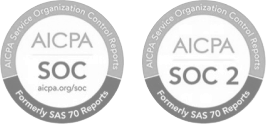Disregarded Entity
Article Navigation
Introduction
A disregarded entity is a business structure where the organization and the owner are treated as one for tax purposes. Instead of filing a separate business tax return, the profits and losses are reported on the owner’s personal tax return. This structure is most commonly used by single member limited liability companies.
Understanding the difference between a disregarded entity and an LLC helps clarify tax obligations. All single member LLCs are considered disregarded entities unless they elect to be taxed as corporations. While liability protection still applies, the entity does not exist separately for tax purposes.
Payroll requirements still apply to disregarded entities. Even though the business and owner are taxed as one, employees must be paid through proper payroll systems with withholdings for income tax, Social Security, and Medicare.
The Internal Revenue Service sets clear rules for disregarded entities. While income tax is filed under the owner’s return, employment taxes must be filed separately using the appropriate payroll tax forms. This distinction is important to avoid compliance issues.
A single member LLC operating as a disregarded entity remains one of the most popular business choices. It combines the simplicity of pass through taxation with the flexibility of limited liability while requiring careful attention to payroll reporting obligations.































 Back
Back